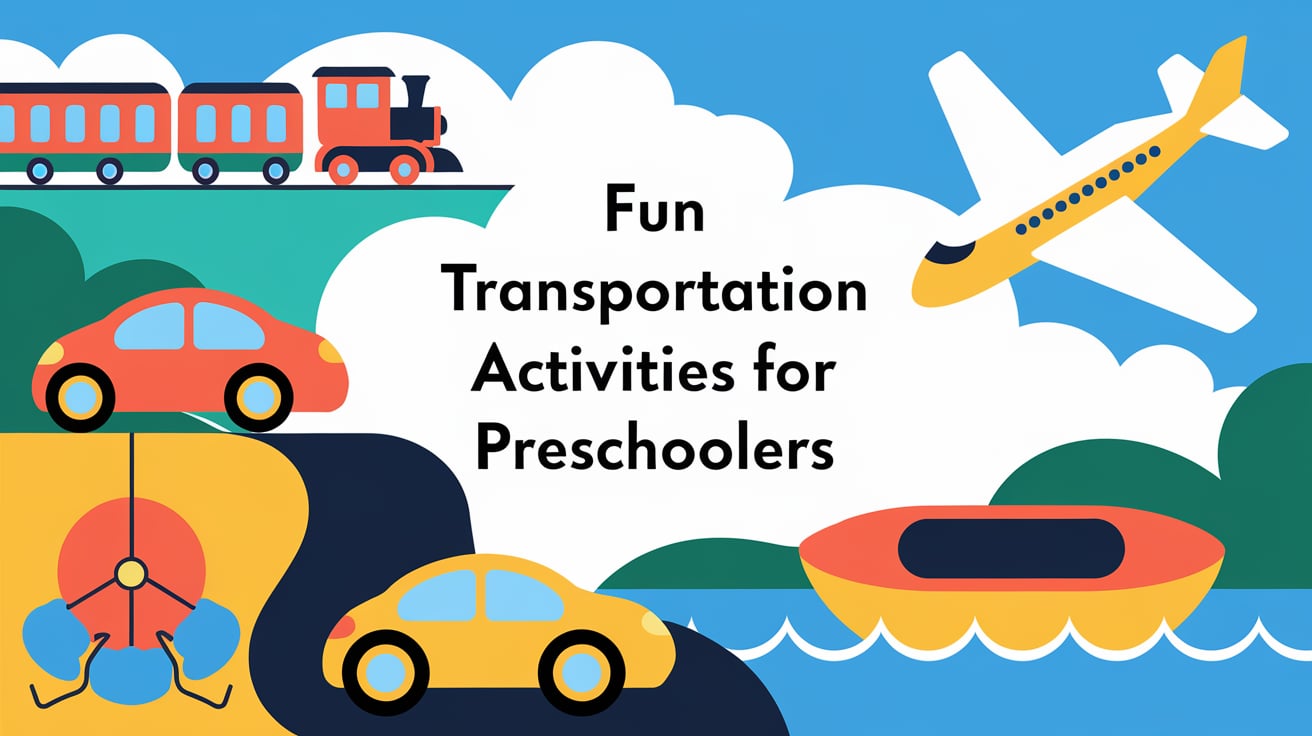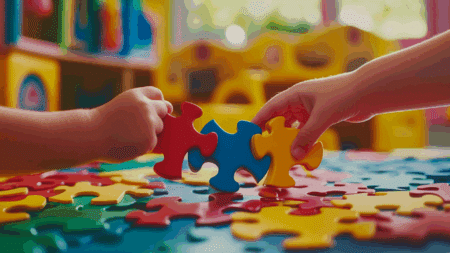Children are naturally drawn to anything that moves. Cars, trains, and airplanes capture their attention and root curiosity. Transportation-themed play creates a big world of learning for preschoolers.
This natural interest makes transportation the perfect theme for early learning activities. When children play with vehicles, they develop important skills. Their fingers gain strength and control as they push toy cars along tracks. Through everyday play, they learn new words.
Transportation activities also help children think and solve problems. They learn through trial and error. Playing with vehicles also builds social skills. They share ideas and create stories about their adventures.
In this blog, we will find simple transportation activities that keep preschoolers engaged while building essential skills for future success.
Why Choose Transportation Activities for Preschoolers
Playing with trucks, trains, and planes helps kids learn in fun ways. When children play with toy vehicles, they pick up new skills without even knowing it.
Kids learn best when they can touch and move things. Toy cars and trains let them see how things work with their own eyes. This hands-on play teaches better than just listening to adults talk. They talk about things going “fast” or “slow.” They learn words like “wheel,” “ticket,” and “journey.”
Transportation toys help little hands get stronger. Small fingers learn to work better when children grip toy cars or put tracks together. Big muscles grow stronger when kids push, pull, or pedal vehicles. Children learn colors by playing with different colored cars.
Make-believe is important too. Kids pretend to be bus drivers or pilots. They create stories about where their vehicles are going.
Playing with others teaches sharing and taking turns with favorite vehicles. These are skills they’ll need in school and life.
Fun Transportation Activities for Preschoolers
Get little ones moving and learning with these fun transportation activities! They’re great for building early skills through play, using cars, trucks, planes, and more to spark excitement.
1. Paper Plate Hot Air Balloon Craft

Kids love making paper plate hot air balloons! This simple craft uses items you already have at home. You need paper plates, markers, crayons, and some string.
First, have children color and decorate their paper plates. The paper plate will be the top part of the balloon. Next, help them cut a small paper cup or another paper plate to make the basket. This is where the imaginary passengers will ride.
Then, attach the basket to the balloon using string or yarn. Tie it securely so it doesn’t fall off.
Now it’s time to talk about how hot air balloons work. Explain that hot air rises because it’s lighter than cold air. The heat inside the balloon makes it float up into the sky. You can use simple words like “hot air goes up” and “balloon gets lighter.”
2. Sensory Bin: Construction Site Play

Start with a plastic bin or container. Fill it with sand, rice, or dried beans as the base. The filling should be deep enough for digging and building. Add toy construction vehicles like dump trucks, bulldozers, and excavators. Include small shovels, cups, and containers for loading and unloading.
You can make the site more exciting with small rocks, sticks, or blocks. These become the materials that the construction vehicles move around. When children play, they’ll naturally start moving the “dirt” with their trucks. They might build roads or tunnels. They could load materials into dump trucks and move them to new locations.
Talk with children about what each vehicle does. Use words like “scoop,” “dump,” and “flatten.” Ask questions like “What is your bulldozer building?” or “Where is the dump truck taking those rocks?”
Construction site play combines fun with learning about an important type of transportation that helps build our world!
3. DIY Parachutes (Science Exploration)

Kids love watching things float down from the sky! Making DIY parachutes is simple and fun.
You need squares of light fabric or plastic bags, string, and small toy figures. Cut the fabric into squares about 8 inches across. Tie four pieces of string to the corners of each square. Connect the strings at the bottom and attach a small toy.
Let children drop their parachutes from different heights. Watch how they float gently to the ground. Talk about how air pushes up against the fabric, making the toy fall slowly. This is how real parachutes work too!
This activity teaches children about gravity and air resistance in a way they can see and understand.
4. Transportation Memory Game

Memory games help kids think while they play. A transportation-themed game is perfect for vehicle lovers!
Cut cards from cardstock paper. Draw or print two matching pictures of each vehicle—cars, trains, boats, planes, and buses. Place all cards face down on the table. Children take turns flipping two cards to find matches.
When they find a match, talk about that vehicle. “What sound does a train make?” or “Where do we see boats?”
This game builds memory skills and helps children recognize different types of transportation.
5. Coloring Pages of Transportation Vehicles

Coloring pages let children express creativity while learning about vehicles.
Print pictures of cars, trains, planes, and boats for children to color. Simple outlines work best for little hands. As they color, talk about each vehicle. “Cars drive on roads” or “Planes fly high in the sky.”
Ask questions like “Have you ever been on a bus?” to connect the activity to their experiences.
This quiet activity builds fine motor skills and helps children learn vehicle names and purposes.
6. Build a Road with Tape

Turn your floor into a city with just some masking tape! This activity gets children moving and thinking.
Use tape to make straight roads, curves, and intersections on the floor. You can also add tape for “parking spaces.” Children drive toy cars along your tape roads. They learn to follow paths and make turns.
Talk about road safety as they play. Teach words like “stop,” “go,” and “yield.”
This activity helps children understand how roads work and how to move vehicles safely.
7. Paper Train Name Craft

Children love seeing their names turned into a colorful train! This craft connects literacy and transportation.
Cut squares from colored construction paper. Help children write one letter of their name on each square. Glue the squares in order onto a long strip of paper. Add an engine at the front and caboose at the back. Draw wheels under each car and add details like windows and smoke.
Talk about how trains connect cars together, just like letters connect to make names.
This craft helps children learn letter recognition while creating their own special train!
8. Sticker Transportation Collage

Kids have fun creating pictures with stickers! A transportation collage is colorful and easy to make.
Give children a variety of vehicle stickers—cars, trucks, buses, and boats. Provide a large sheet of paper as their background. Let them stick the vehicles wherever they want on their paper. They might create roads or group similar vehicles together.
Talk about the different vehicles as they work. “Where does this bus go?” or “What color is that truck?”
This activity helps with fine motor skills as children peel and place stickers. They also learn to sort and group transportation types.
9. Indoor Car Races

Children love racing toy cars across the floor. This active game gets them moving and thinking.
Make a simple track using masking tape on the floor. Add start and finish lines. You can make it straight or add curves. Let children choose their favorite toy cars to race. Count down “3-2-1-GO!” and watch them push their cars along the track.
Talk about how cars need roads to travel safely. Discuss concepts like “fast,” “slow,” “first,” and “last.”
This activity teaches children about motion and speed while they have fun racing.
10. Create a Vehicle Puzzle

Puzzles help children think and solve problems. Vehicle puzzles add fun transportation learning too!
Cut pictures of vehicles from magazines or print them. Glue each picture to cardboard and cut into 3-5 pieces. Mix up the pieces and let the children put the puzzles back together. For younger children, start with fewer pieces.
As they work, talk about each vehicle. “This boat goes on water” or “This helicopter can fly.”
This activity builds thinking skills while teaching about different types of transportation.
11. Runway Airplane Game

Children love pretending to fly.
This game gets kids moving their bodies while learning about airplanes. Use masking tape to create a “runway” on the floor. Make it long enough for children to run along.
First, let the children be the airplanes. They can hold out their arms like wings and “take off” down the runway. Then, use toy airplanes to practice taking off and landing on your runway. Make airplane noises together!
Talk about how real airplanes need runways to take off and land safely. This game teaches about aviation while burning energy.
12. Traffic Light Game

A traffic light game teaches important safety rules through play.
Using construction paper, create a simple traffic light. Glue red, yellow, and green circles on black paper. Explain what each color means: red means stop, yellow means slow down, and green means go.
Hold up different colors and have children respond. When you show green, they walk or run. Yellow means walk slowly. Red means freeze!
This fun game teaches traffic safety rules that children need to know for the real world.
13. Emergency Vehicle Play

Emergency vehicles help people in trouble. This play teaches about community helpers. Show children toy police cars, fire trucks, and ambulances.
Talk about how each vehicle helps people. Let them role-play emergencies. “Oh no, there’s a fire! Let’s drive the fire truck to help!” Teach them when to call 911 and what information to share. Practice being helpers in your community.
This play helps children understand important safety concepts while learning about special vehicles.
14. Create a Train Station

A pretend train station brings railway fun to your classroom or home.
Set up toy train tracks on the floor. Add blocks to create a simple station building nearby. Children can be conductors wearing hats, or passengers buying tickets. They can load cargo or wave flags.
Talk about different train cars and what they carry. Discuss how trains follow tracks to reach destinations.
This play helps children understand an important type of transportation while encouraging social skills through pretend play.
15. Build a Mini Road System

Gather blocks, toy cars, and small buildings or boxes. You can use any blocks you have—wooden blocks, cardboard boxes, or even books.
Help children arrange the blocks to create roads between buildings. Make straight roads and turning roads. Add a bridge if you have long blocks. Place small boxes or more blocks as buildings along the streets. These become stores, houses, and schools in your mini city.
Now, children can drive their toy cars along the roads they built. They will naturally create stories about where their vehicles are going.
Talk about real roads as they play. Point out intersections where roads cross. Explain how cars must take turns at these spots.
Conclusion
These easy activities use things you already have at home. They keep little ones busy while teaching them about cars, trains, planes, and boats.
When kids play with vehicles, their small fingers get stronger. They learn new words and solve simple problems. They also practice sharing and working together, which helps them prepare for school.
Children love these activities because they connect to what they see in the real world. A child who plays with toy cars gets excited when they ride in a real one.
Why not try one of these activities today? Pick your favorite from the list and watch your child’s face light up with joy.
Ready to get started? The learning happens naturally while they play!




